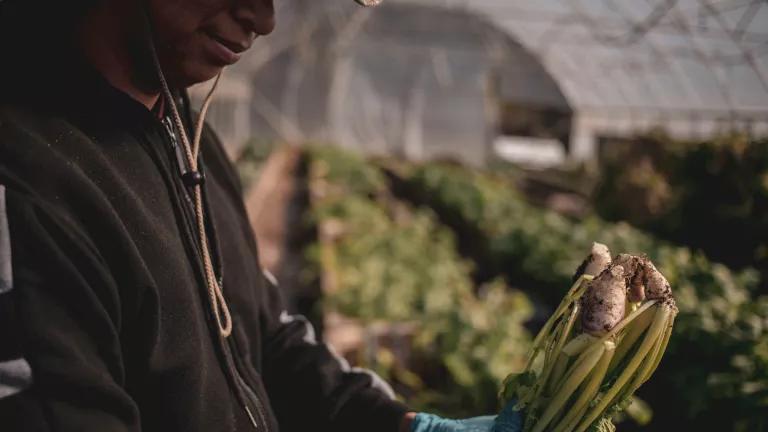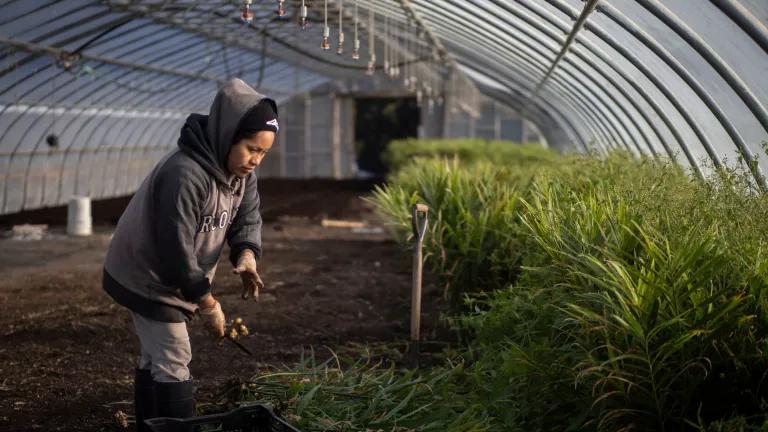USDA: $300M to Grow Food Without Dangerous Pesticides
USDA’s recently announced $300 million Organic Transition Initiative will support a significant expansion of organic in the United States, with a wide range of environmental, health, and economic benefits.

Winfred Denson Jr. harvesting organic turnips in a high tunnel at a Choctaw Fresh Produce project farm on the Mississippi Band of Choctaw Indians Reservation in Mississippi, on December 14, 2021.
Andrea Morales for NRDC
A new USDA initiative to invest in organic agriculture offers critical support in the fight to keep dangerous pesticides out of communities and ecosystems. USDA’s recently announced $300 million Organic Transition Initiative will support a significant expansion of organic in the United States, with a wide range of environmental, health, and economic benefits.
Organic producers grow food without most synthetic pesticides – a significant departure from the dominant method, a chemical-intensive model that was popularized half a century ago. The widespread use of dangerous pesticides has been linked to numerous threats to human and ecosystem health, from increasing cancer risks and interfering with brain development to the collapse of pollinator populations. These chemicals disproportionately harm farmworker communities, which are majority Latino and immigrant, increasing toxic exposures in their workplaces, homes, and water, in addition to the pesticide residues on food that affect most consumers, especially children and pregnant people.
It’s time, as USDA Secretary Vilsack noted, for a transformation: a transition away from harmful, extractive practices, toward diversified organic agriculture that promotes health and prosperity.
As National Geographic recently reported, farmers are “better off organic.” Research continues to confirm that organic operations are more resilient – in the face of extreme weather, extreme increases in fossil fuel-based input costs, and extreme consolidation that make it hard for many farms and ranches to survive. In a 40+ year trial by the Rodale Institute, after a transition period, organic yields are competitive with conventionally managed land, and up to 40 percent higher in drought years. The organic farms fare better financially, while also avoiding pollution from toxic pesticides and synthetic fertilizer run-off.
Likewise, a recent Organic Farming Research Foundation (OFRF) report found that “organic producers lead the nation in adoption of soil health management and climate-friendly practices,” with strong use of cover crops, crop rotation, perennial conservation planting, and natural fertilizers that benefit the environment and health. Even so, the report also found that many producers lack adequate technical assistance – especially for beginning organic farmers and Black, Indigenous, and other people of color (BIPOC) producers.
The organic sector has grown significantly – far outpacing the rest of the food and agriculture sector – for decades, with relatively tiny public investments. USDA’s decision to invest more strongly in organic has the potential to help countless producers access mentorship and technical assistance to make the leap to organic successfully, and people across the country will benefit from more widely available and affordable organic food, resulting in less pesticide exposure. Perhaps this will prove to be a tipping point that will help USDA move away from supporting chemical agriculture and integrate organic leadership and practices as a foundation across the agency and across the country.



